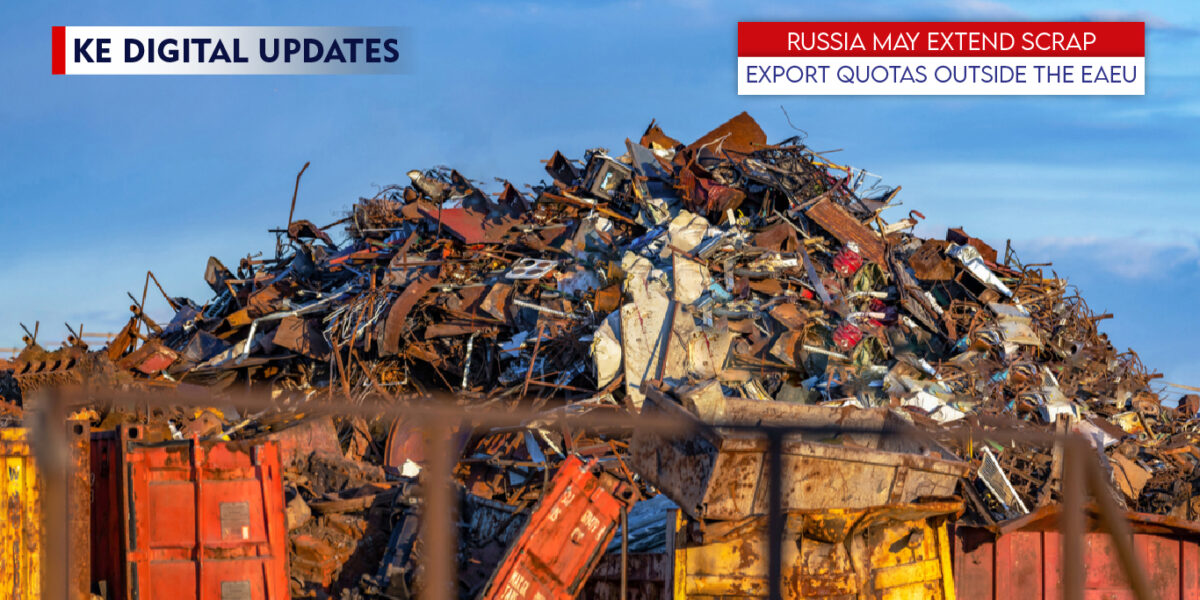Published on November 21, 2024
In a strategic move to stabilize the domestic market, Russia’s Ministry of Industry and Trade has drafted a resolution to extend the existing tariff quota for scrap metal exports outside the Eurasian Economic Union (EAEU) by another year, until December 31, 2025. This extension aims to regulate the scrap metal market and prevent price hikes within Russia.
Current Quota System
The current quota system, introduced in June 2022, has set a limit of 550,000 tons for scrap metal exports outside the EAEU. Under this system, exports within the quota are subject to a duty of 5% of the value, with a minimum duty of EUR 15 per ton. Exports exceeding the quota are subjected to a higher duty of 5% but not less than EUR 290 per ton. This dual-rate duty structure is designed to discourage excessive scrap exports and maintain sufficient supply for domestic steel producers.
Economic Rationale
The government’s primary rationale behind extending these quotas is to prevent significant price increases in the domestic market. By controlling the volume of scrap metal that can be exported, the government ensures that local industries have adequate access to raw materials, thereby stabilizing prices and supporting the local economy.
Impact on the Domestic Market
The quota system has positively impacted the domestic market, ensuring a steady supply of scrap metal for local steel producers. This availability is crucial for the steel industry, which relies on scrap metal as a primary raw material for production. Stabilized scrap prices help maintain competitive production costs, essential for the industry’s sustainability and growth.
Challenges and Industry Response
While the quota system aims to protect the domestic market, it poses certain challenges for exporters who may find their export volumes limited. However, the higher duties on exports exceeding the quota are intended to balance these concerns by discouraging excessive exports and prioritizing local demand.
Industry stakeholders have generally responded positively to the quota extension, recognizing its role in stabilizing the market. However, some exporters have expressed concerns about the potential impact on their revenues and market competitiveness.
Conclusion
The proposed extension of the scrap export quota by Russia’s Ministry of Industry and Trade reflects the government’s commitment to stabilizing the domestic market and supporting local industries. By extending the quota system until the end of 2025, the government aims to maintain a balanced supply of scrap metal, prevent price volatility, and ensure the sustainable growth of the steel industry.
As the global market for scrap metal remains dynamic and competitive, the extension of these quotas will likely play a crucial role in shaping the future of Russia’s scrap metal market and its broader industrial landscape.


